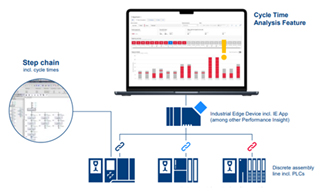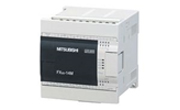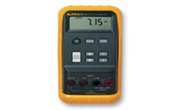Maximise factory efficiency with overall equipment effectiveness (OEE)
OEE is a powerful tool for measuring efficiency in industrial settings. By identifying all manufacturing losses, it enables informed business decisions that can enhance the performance, capacity, and utilisation of plant assets.
In today’s competitive market, businesses must operate efficiently to maximise productivity while ensuring high-quality, sustainable products. To achieve this, manufacturers must ensure production systems are always available, improve quality and throughput, and reduce costs. One practical approach is integrating Overall Equipment Effectiveness (OEE) into manufacturing, which can significantly enhance efficiency and performance. Leveraging IIoT, predictive maintenance, Edge, and cloud computing can enhance OEE initiatives, increasing transparency and operational efficiency and boosting Return on Investment (ROI). This article will cover the fundamentals of OEE, methods for improving it, and strategies for increasing factory productivity. It will also highlight how cloud and edge computing optimise OEE.
Understanding the concept of OEE
OEE is a crucial manufacturing metric used to assess the efficiency and productivity of machines and the workforce. It measures how efficiently a manufacturing process s its full potential during scheduled production. OEE is composed of three critical components:
Availability: This metric assesses the percentage of scheduled time that equipment is operational, highlighting the impacts of downtime. It includes active time, setup time, unplanned downtime, and equipment breakdowns. Availability is calculated by comparing the machine's operating time to the planned production time.

For example, if a machine was supposed to be operated for 8 hours but, due to a breakdown, was operated for 6 hours, the availability would be 75%.
Performance: It measures the machine's operational efficiency by accounting for speed losses and minor stoppages. It is determined by comparing the ideal cycle time to the actual cycle time.

For example, If a machine produces 1600 units in an hour instead of its maximum capacity of 2500, the performance is 64%.
Quality: It measures the percentage of goods produced without defects, meeting or exceeding quality standards.

For example, if 180 good units are produced out of 200 total units, the quality would be 90%.
The OEE metric is calculated by multiplying three components. OEE: Quality x Performance x Availability
In this example, with 75% availability, 64% performance, and 90% quality, the OEE score is 43.2% (0.75 * 0.64 * 0.9).
By regularly calculating and monitoring OEE, manufacturers can identify the most critical issues affecting equipment performance and take targeted actions to improve manufacturing efficiency.

Figure 1: Calculation method for OEE (Self-created)
Interpreting OEE results is crucial for pinpointing areas that need improvement. By analysing these results, manufacturers can direct their efforts where they are most needed. An OEE score above 85% indicates optimal equipment efficiency, while an average score of around 40% suggests a need for ongoing improvement. A 100% score is highly challenging, as it requires producing only perfect parts at maximum speed with zero downtime. OEE benchmarks vary across industry and manufacturing methods. There is no universal OEE score, as each sector has different standards. For example, discrete manufacturers often have lower OEE scores due to the complexity of their production processes.
The importance of OEE in manufacturing
OEE is a vital metric for manufacturing companies, offering numerous benefits that can enhance factory operations. Key advantages include:
- Increased productivity: OEE helps identify underperforming equipment or processes, allowing targeted improvements. By tracking downtime, it optimises equipment use, improves scheduling and maintenance, and leads to higher availability and productivity. It also boosts workforce productivity by assisting managers in identifying areas where operators need additional training or support.
- Improved quality: OEE tracks defects and rework, providing valuable data to identify the root causes of quality issues. This analysis facilitates continuous improvement. By leveraging OEE insights, factories can minimise scrap and rework, resulting in cost savings and higher-quality products.
- Enhanced maintenance: OEE data supports predictive maintenance schedules, reducing unplanned downtime and extending equipment lifespan. By planning maintenance during low-demand periods, manufacturers can minimise disruptions and maximise equipment availability.
- Cost reduction and ROI improvement: Improving OEE reduces operational costs by reducing energy consumption, labour expenses, and material waste. High OEE enables manufacturers to meet their targets more effectively, helping achieve a strong ROI by minimizing machine downtime and producing quality goods.
- Better resource utilisation: OEE highlights underutilised machines, enabling more effective resource allocation and reducing the need for additional capital investments. Targeted hands-on training improves workers’ skills, resource utilisation, and overall performance.
- Data-driven decision making: OEE provides real-time production data that can be analysed to address issues and make informed decisions quickly. This data also supports continuous improvement initiatives, improving productivity and quality over time.
- Increased competitiveness: OEE allows manufacturers to benchmark their performance against industry standards or competitors. A high OEE score leads to more consistent production, better-quality products, and on-time delivery, all of which boost customer satisfaction.
OEE solutions in achieving manufacturing excellence
Predictive maintenance is critical to improving higher OEE scores by continuously monitoring equipment health. Early detection of anomalies or wear prevents minor issues from becoming significant failures. This proactive approach enables maintenance teams to schedule repairs during planned downtime, minimizing unexpected breakdowns and ensuring equipment availability when needed. The integration of sensors, PLCs, and IIoT devices provides real-time data on equipment and processes, helping to automate repetitive or complex tasks. This improves output, speed, and accuracy while reducing human error. Strategic investments in equipment upgrades further boost efficiency by using fewer resources and less time and reducing waste. Employee engagement is essential to a successful manufacturing process. By motivating and empowering workers, organizations can continuously improve production activities and OEE performance. Regularly sharing real-time OEE results with operators offers valuable insights into areas needing improvement. Adopting best practices and industry standards, such as QFD, Kaizen, Zero Defect, PDCA, TQM, Taguchi methods, Quality Circles, and Six Sigma, is vital for optimizing manufacturing processes and improving OEE performance. These techniques allow organizations to benchmark their performance against industry standards and significantly enhance customer satisfaction.
Role of industrial edge computing in OEE improvement
OEE evaluates manufacturing efficiency based on performance, availability, and quality metrics. By using edge devices in manufacturing plants, companies can leverage prescriptive diagnostic analytics to optimise assets intelligently. This approach minimises unplanned downtime, improves product quality, and maximises asset utilisation. As asset performance, quality, and availability improve, factories move closer to achieving 100% OEE. Edge-enabled platforms provide seamless real-time data streaming, enabling advanced analytics on asset health, performance, and product flow. These insights support predictive maintenance and yield optimization by analysing increasing volumes of real-time data.
A key example is the Industrial Edge digitalization platform that processes data at the machine level. This ready-to-use edge platform integrates applications, OT and IT connectivity, devices, and a central management system, making data handling scalable, secure, and easy to use on the factory floor. Industrial Edge simplifies data collection, analysis, and bottleneck identification, improving OEE by enabling better monitoring of assets and resource consumption.
Use cases of industrial edge computing to improve OEE with manufacturer examples
- Enhancing performance in automobile manufacturing line:
Volkswagen leveraged industrial edge computing to optimise its automotive production line, where different car body types are produced on the same line. Each model introduced varying workloads, often leading to production delays when new models were introduced. Volkswagen lacked transparency regarding the root cause and needed a solution to identify problematic stations and sequences within their VASS-based PLC program (Volkswagen Proprietary) without modifying the PLC code.
To resolve this, Volkswagen implemented a performance monitoring app that analysed cycle times across machine stations. This app automatically generated dashboards providing insights such as "views per product," "Look in the past," "what if analysis," and real-time feedback after optimizations. The system, built with Siemens Edge devices, allowed data collection, harmonization, and storage independent of the PLCs. A central platform enabled software updates for edge apps and devices across multiple factories in different countries.
The solution resulted in significant improvements in production throughput without requiring production stops or PLC reprogramming. The plug-and-play installation and low-code visualization capabilities reduced service and engineering efforts, driving higher efficiency with minimal disruption.

Figure 2: Improving OEE in automotive manufacturing line using Edge Computing (Source)
Maximizing equipment throughput of a global life sciences company
A global life sciences manufacturer faced challenges collecting critical data from older PLCs that lacked Ethernet connectivity, essential for process control and OEE. Since these 15-year-old PLCs were Food and Drug Administration (FDA) validated, they could not be updated or modified, hindering data needed for optimizing production and improving equipment throughput.
To address this, the company adopted Omron’s NX1P machine automation controller, which allowed it to collect data from legacy equipment without altering its operating state. The NX1P features advanced motion, networking, and I/O management while supporting IIoT solutions. By connecting the NX1P to the existing PLC via Factory Interface Network Service (FINS), the company could gather necessary data without modifying the PLC or machine. Additionally, the solution enabled tracking of machine locations and performance, even as equipment was moved across different global sites.
Conclusion
Maximizing productivity and profits is a top priority of any business. Calculating and analysing OEE scores helps manufacturers improve the performance and efficiency of their operations. OEE provides a clear view of factory performance and highlights areas for improvement. Predictive maintenance also plays a critical role in improving OEE by increasing equipment availability, optimizing performance, and maintaining product quality.
The integration of advanced technologies, such as cloud and edge computing, enables manufacturers to monitor equipment health in real-time, anticipate failures, and optimise maintenance activities. Farnell supports these processes by offering a comprehensive portfolio of industrial automation products, including PLCs, sensors, and other related devices.















